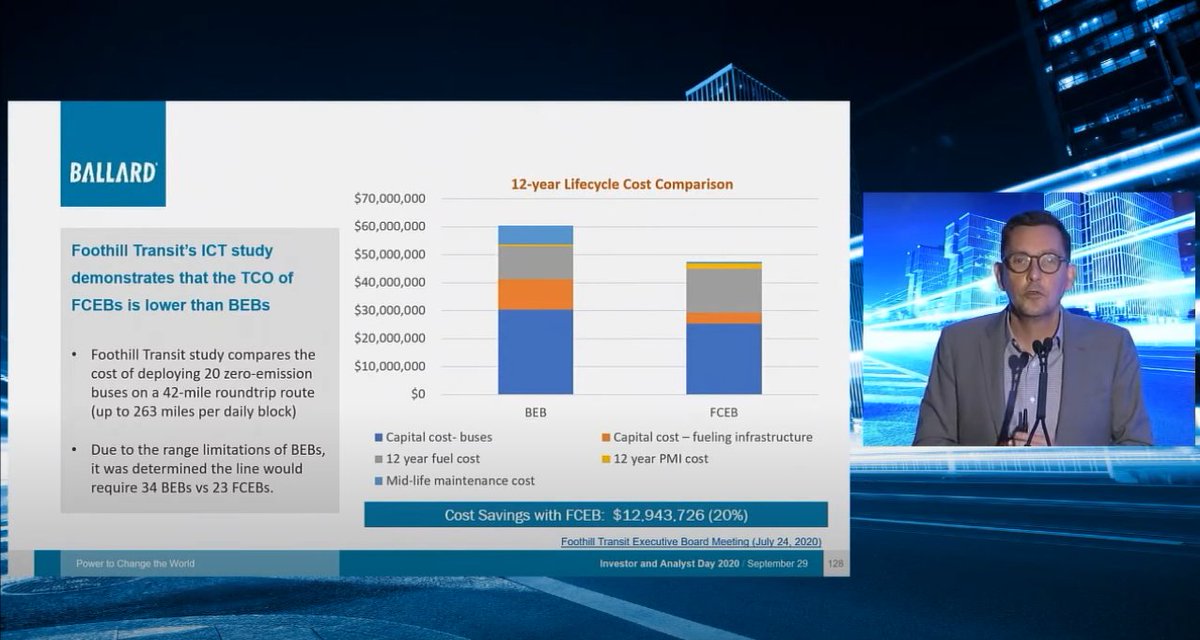Foothill Transit in LA compared battery bus vs fuel cell bus on a single 42 mile route, 263 miles per daily block. Due to range limitations they would need 34 battery buses vs only 23 fuel cell buses. So the initial costs of the buses themselves was lower for fuel cell buses.
Even though they cost more on a per units basis, you simply need fewer of them to get match existing performance standards of diesel ICE. So even the initial capital outlay is less. H2 infrastructure costs more? For a few buses, yes. But not for a fleet.
If you are fueling a fleet, you need to build a small power station next to your depot. It actually costs more than H2. And it has larger footprint, also more money.
Mid life maintenance costs are also lower for fuel cell buses. Battery buses will need a new battery after 12 years of 20 hour days. Fuel cell stacks can be taken apart, repacked, and put back on the road. Also no disposal cost.
Battery buses will also not provide the redundancy that fuel cell buses can. They will not be available to service other route distances.
Take away: on this single route, Foothill Transit will save $13 million by going with fuel cell buses.
Take away: on this single route, Foothill Transit will save $13 million by going with fuel cell buses.

 Read on Twitter
Read on Twitter


